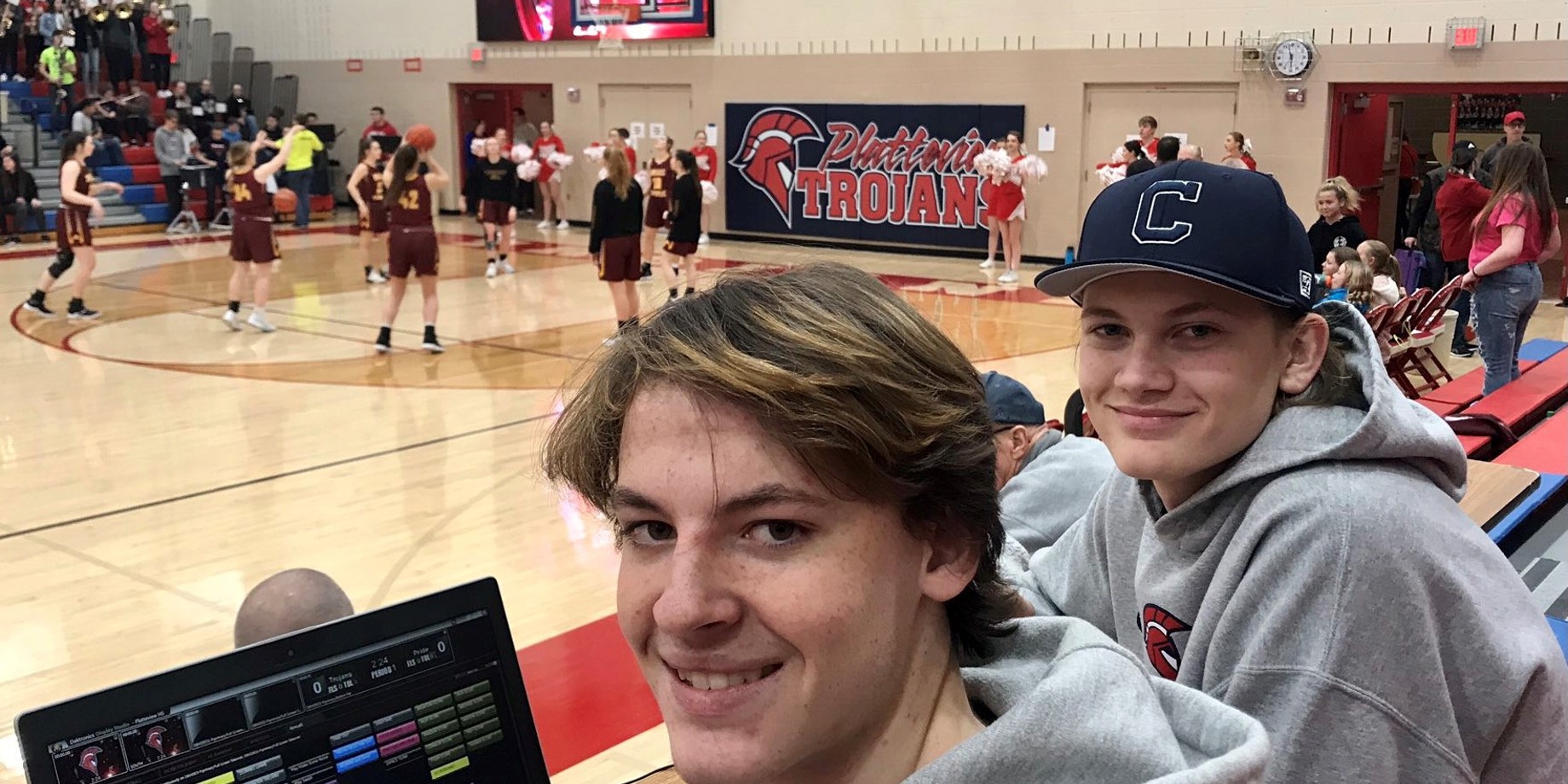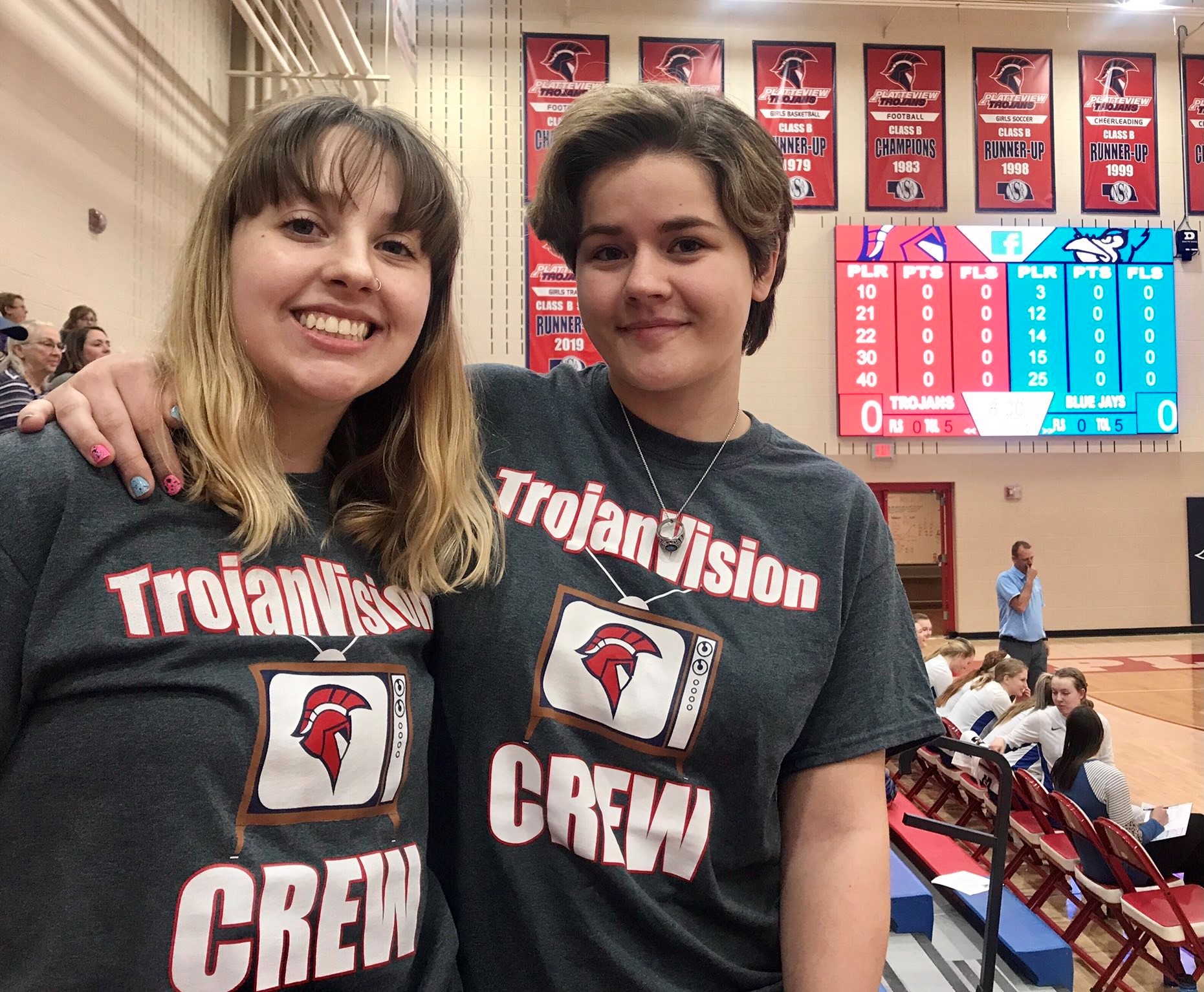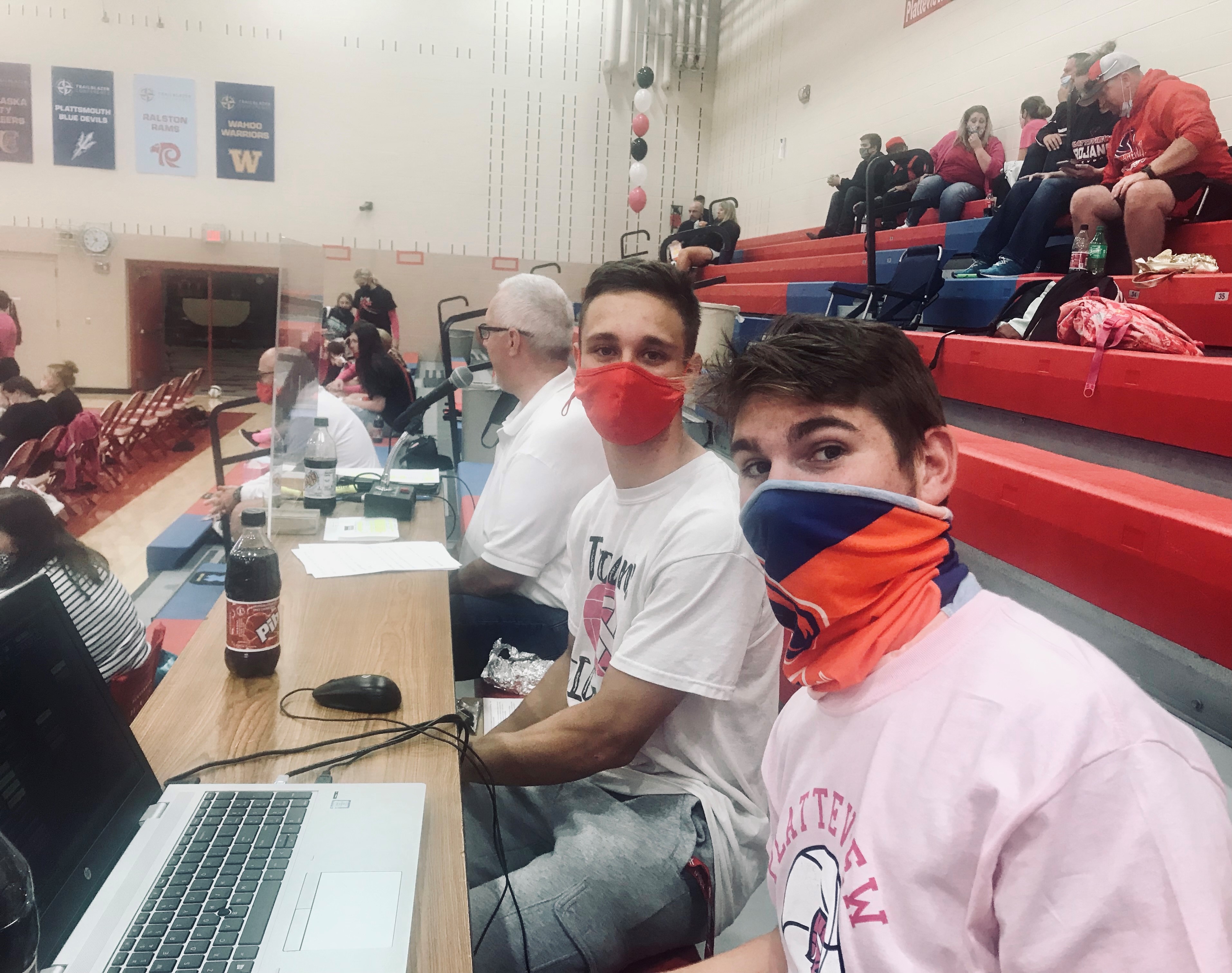Students Earn Money While Gaining Skills
This follow-up to our previous blog provides an update about how Platteview High School students are learning important life skills like meeting deadlines and organization, technical skills such as graphic design and operating the video board, and even earning money for their efforts.
2/17/2021
Categories: High School Sports

Platteview High School in Springfield, Nebraska, is a small school with big success, especially when it comes to their video displays. They have two 3.9-millimiter pixel pitch Daktronics video displays in their gym. (Read the story about how they decided to install the displays they did and the way they are using them to raise funds in our previous blog.)
Arguably, the students of PHS are seeing the greatest benefit to having the video displays. Amy Thayer is the Media Specialist for grades 7-12. She handles the school’s technical issues as well as teaching students how to run the video display.
The learning process
They use the Daktronics Curriculum as a basis for the class. They first learn the material, then take the ideas presented in the curriculum to develop plans and prepare for game days and events.
“We have five kids in the class, and six who can produce games,” Thayer explains. “Each one has his own look/template in Show Control, so it makes sense to them. They have a sheet that they need to complete before the game. They talk to the cheerleaders, the dance team and anyone with a special event. There’s a lot of coordination. They have even developed hand signal with the cheerleaders, so they know what song to play.”

The class meets at the beginning of each week to plan for all the events happening for the rest of the week, which can include basketball, volleyball, wrestling, meetings or other special events. They divvy up the jobs and the students can work at their own pace, as long as they meet their deadlines.
Thayer says although the students haven’t yet gained the confidence to put their own creativity to work, they are good at taking ideas from the curriculum and developing them.
“Our students are starting to specialize in the things they really like to do,” says Thayer. “One has started doing highlight reels to run on the display before the next game. Another likes to design the scoreboard, and another likes to put “sweet shot” and other graphics on the board.”
Some of the students had to learn about the sports themselves, as they had never played or attended games before they started running the video displays. She laughs as she recalls one student who kept putting the graphic “Swish!” up on the board, when the basketball was hitting the backboard or the rim before going through the net.
“He just didn’t know what it meant,” she says. “It’s been fun seeing them learn more than just the board operations.”
Thayer says it’s moments like this that she tweets out that students are operating the board. “There will be mistakes, but that’s part of the learning process. It’s important that people know so they can be supportive.”

PHS uses Show Control to operate their board, which Thayer says is easy to use. “Kids load about half of the content and I do the rest that they have made. The students then have to check it all before the game. I have to make sure fit all goes to the right place. Once everything is uploaded, running it is very simple. The students can arrange the buttons how they want.”
Earning money and expanding capabilities
Students do get paid $10 an hour on the nights they operate the board, which is also great motivation for them.
“I’m usually there to help them get started, but once they run one game, they’re pretty self-sufficient,” Thayer says. “The students can run special timeouts, ads, and more.”
They have recently started showing features like “dance cam” and “mask cam.” Thayer will take her iPhone out to the fans to get them dancing. She uses Airplay to send it to Apple TV, which is plugged into one of the inputs.
Platteview is also using the video boards beyond the game. For example, they have both girls’ and boys’ wrestling teams. When the boys wrestle at home, they can use one board to show their score, while using the other board to show the girls’ out-of-town meet.
During conference basketball games, the boys played at home. Once it was over, they could pull in the feed for the out-of-town girls’ game, which went into overtime. Fans could stay and experience the game together.
Thayer says it is also used during the dance section of their PE class, and the basketball teams use the video boards during practice as well. It doesn’t stop there, either.
“We used the video board for the National Honors Society Induction, graduation, meetings while we try to find a new superintendent… really any group that wants to use it,” she says. “The more the public sees us using it, the better.”
Looking forward
Because Daktronics video boards are used in so many universities, students who have studied the Daktronics curriculum and gotten hands-on experience have a definite advantage. It sometimes even inspires students to discover new career choices.
Thayer says one senior in her class wants to study video production in college, and he is using the education he’s received on the Daktronics video board to help him reach his goals.
“His final this semester is making graphics for the board and doing research about a career in this area,” she says. “I want to help the students find opportunities in colleges.”
To learn more about how the Daktronics Curriculum can work in your school, visit http://www.daktronics.com/curriculum
